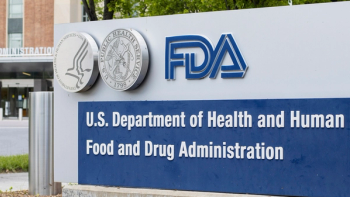
Medicaid Expansion Shifts To Earlier Testicular Cancer Diagnosis
Key Takeaways
- Medicaid expansion led to a 30.4% increase in enrollment and a significant reduction in uninsured testicular cancer patients.
- States with Medicaid expansion saw a shift towards earlier stage diagnoses, with stage 1 cases rising from 52% to 60%.
Medicaid expansion reduced the rate of uninsured patients with testicular cancer, and in particular, enabled more men to have earlier stage diagnoses.
Medicaid expansion reduced the rate of uninsured patients with testicular cancer, and in particular, enabled more men to have earlier stage diagnoses, according to study results presented at the 2018 Genitourinary Cancers Symposium.
"One crucial aspect of the Affordable Care Act is the optional Medicaid expansion, which started in 2014," the researchers wrote. "Patients with testicular cancer may derive particular benefit from Medicaid expansion due to demographics overlap."
In all states, individuals can qualify for Medicaid based on income, household size, disability, family status and other factors. In states that have expanded Medicaid coverage, individuals may qualify based on income alone if their household income is below 133 percent of the federal poverty level.
Medicaid expansion could potentially improve outcomes in this patient population.
Researchers from the University of Kansas Medical Center in Kansas City used the Surveillance Epidemiology and End Results (SEER) database to identify testicular cancer cases diagnosed from 2010 to 2014. They then separated data by states that did or did not undertake Medicaid expansion to compare diagnoses and outcomes.
In total, 12,731 cases of testicular cancer were identified over the four-year period. Medicaid enrollment increased by 30.4 percent among states that undertook the expansion, and only by 8.4 percent in those that did not.
The researchers noted that expansion did not affect the incidence of testicular cancer. However, Medicaid coverage for those with testicular cancer increased from 14.8 percent in 2010 to 19.4 percent in 2014. Similarly, those who were uninsured decreased from 8.7 percent to 4.3 percent in the same time period.
In states that did not undertake in the expansion, those covered with Medicaid declined from 9.7 percent to 8.8 percent over four years, and those who were uninsured only decreased from 13.6 percent to 12.9 percent.
Even when individual states were evaluated, the researchers found a direct correlation between these percentage increases in Medicaid enrollment and the percentage decreases in uninsured cases.
Among states who undertook Medicaid expansion, stage 1 cases increased from 52 percent to 60 percent, and stage 3 cases decreased from 27 percent to 20 percent. No change between stage 1 and 3 disease was seen among uninsured patients. On the other hand, states who did not undertake expansion showed decreases in stage 1 disease and increases in stage 3 disease.
"Medicaid expansion reduced rate of uninsured for patients with new diagnosis of testicular cancer," the researchers wrote. "There was a shift to earlier stage of diagnosis in Medicaid patients, but no apparent effect yet on management. Future studies will focus on change over time and effect on survival."





